The Ultimate Guide on How to Get Rust Off a Knife Safely!
Knives are extremely useful tools in the kitchen, but due to their high iron content, they can become rusty, with the blade itself getting weaker, and the food becoming unsafe. Today we will learn down these 3 ways for knives one of them is Rust removal knife care. Rust forms when iron, oxygen and moisture combine — it’s a natural process. Although stainless steel knives are designed to resist rust, they are not rust-proof. High-carbon steel knives, which become especially sharp, are more likely to rust when there is lack of maintenance.
Knowing how to clean knives with rust and how different kinds of knives feel about rust is the best way to keep your knives rust-free. If this fact is known, it helps in preventing rust and removing rust from knife when required very easily. In this article, we’ll cover some of the simplest and most effective methods for getting rust off of knives, preventing their rusting, and ensuring they stay healthy for years to come.
How Different Knife Materials React to Rust

Let’s face it, no one likes working with rusty knives. No matter how nice or how expensive your knife is, if you are not taking care of it, rust is going to appear eventually. Here’s the thing: Not all knives are rust-resistant in the same way. Some are much better than others at dealing with moisture and air, so it helps to know how to clean rust off knife before going about cleaning it.
Stainless Steel Knives
Stainless steel knives are pretty good at resisting rust because they contain chromium (usually around 10-13%). But they’re not invincible—if you leave them wet for too long or expose them to acidic foods, rust can still sneak in. The best way to keep them in good shape? Dry them off right after washing and give them a light coat of oil every now and then.
- Rust Resistance: Good, thanks to chromium content (usually around 10-13%).
- Best Maintenance: Dry immediately after washing and oil occasionally.
High-Carbon Steel Knives
High-carbon steel knives are known for being super sharp and tough, which is why professional chefs love them. Unfortunately, they’re also way more likely to rust since they don’t have much (or any) chromium in them. To keep these knives looking and performing their best, oil them regularly and store them properly so moisture doesn’t stand a chance.
- Why They're Great: Super sharp and durable and chefs love them.
- Best Maintenance: Regular oiling and proper storage to keep moisture away.
Damascus Steel Knives
Damascus steel knives are the perfect blend of strength and beauty, thanks to their mix of high-carbon and stainless steel. They look amazing, but they’re not immune to rust—especially in humid environments. To protect your Damascus knives, always wash them by hand, dry them right away, and add a protective coating to keep moisture out.
- Strength & Beauty: Combines high-carbon and stainless steel for performance and style.
- Best Maintenance: Hand wash, dry right away, and apply a protective coating.
Looking for expert-crafted knives? Check out our latest Damascus knife collection
Best Rust Removal Methods for Knives: From DIY to Pro Solutions

Hands full of a rusty knife? Don’t worry, you are not alone! The good news is that you do have a number of ways to take care of rust so that your Damascus knives stay looking as good as the day you bought them, however, rust can sneak up on the best of knives. Whether you like to tackle DIY fixes or prefer a pro job, I have you covered on the best ways to remove rust from a knife and how to keep them sharp and shiny.
Home Remedies to Get Rust Off Knives
Sometimes, the simplest solutions are the best. How to get rid of rust on knife with common household items? Home remedies for rust removal are great because they’re affordable, easy to do, and typically use items you already have around the house. These methods work best for light to moderate rust spots that haven’t deeply set into the blade.
1. Baking Soda and Water Paste
One of the most popular DIY methods, baking soda paste is gentle yet effective. It’s perfect if you’re dealing with surface rust and want to avoid scratching your knife. Plus, it’s super simple to make and use.
- Why It Works: Baking soda is slightly abrasive and reacts with rust to help break it down.
-
How to Do It:
- Mix baking soda and water to make a thick paste.
- Spread it over the rusty spots and let it sit for 15-20 minutes.
- Gently scrub with a soft brush or sponge.
- Rinse with warm water and dry immediately.
- Best For: Light surface rust on stainless steel knives.
2. Vinegar Soak Method
When rust is stubborn and won’t budge with just scrubbing, vinegar can be a game-changer. The acetic acid in vinegar breaks down the rust and makes it much easier to wipe away. Just be careful not to overdo it, as vinegar can dull the blade if left on too long.
- Why It Works: The acid in vinegar dissolves rust, making it easier to remove.
-
How to Do It:
- Submerge the rusty knife in white vinegar for 1-2 hours.
- Gently scrub with a sponge or steel wool.
- Rinse well and dry completely.
- Best For: Heavily rusted knives.
- Heads Up: Don’t soak it overnight—vinegar can dull the blade.
3. Lemon Juice & Salt Treatment
This method is great if you prefer something a bit more natural and don’t mind a little scrubbing. Lemon juice’s acidity breaks down rust, while salt acts as a mild abrasive to help scrub it away. Plus, it leaves your knife smelling fresh!
- Why It Works: Lemon’s citric acid breaks down rust, while salt acts as a gentle scrub.
-
How to Do It:
- Sprinkle coarse salt over the rusty area.
- Squeeze fresh lemon juice on top.
- Let it sit for 30 minutes, then scrub it with a cloth.
- Best For: High-carbon steel knives.
- Watch Out: Leaving lemon on too long can stain carbon steel.
4. Potato Soaking Technique
Yep, you read that right—potatoes can help remove rust! This method works because potatoes contain oxalic acid, which naturally dissolves rust. It’s an unexpected but handy trick when you’re in a pinch.
- 💡 Why It Works: Potatoes contain oxalic acid, which helps dissolve rust.
-
📝 How to Do It:
- Stick the rusty knife into a raw potato and leave it for about an hour.
- Take it out, rinse it well, and dry it right away.
- 👍 Best For: Quick fixes and light rust.
Professional Rust Removal Methods
Sometimes home remedies just don’t cut it—especially if the rust is deep or has been sitting for a while. That’s when professional methods come into play. These are typically faster and more thorough but may require specialized products or equipment.
1. Knife Rust Erasers
Rust erasers are a popular choice among professionals because they can tackle tough spots without scratching the blade. They’re like magic erasers but designed specifically for knives.
- Why It Works: These fine abrasive blocks remove rust without scratching up your blade.
- Best For: High-carbon steel knives that need a delicate touch.
- Pro Tip: Go easy with the pressure to avoid damaging the knife’s surface.
2. Chemical Rust Removers
When DIY solutions aren’t enough, commercial rust removers can be lifesavers. They contain powerful chemicals that break down rust quickly, but make sure to check if they’re safe for food-related use.
- Why It Works: Products like Bar Keepers Friend break down rust at a molecular level.
- Best For: Deeper, tougher rust that home remedies just can’t fix.
- Safety Tip: Make sure the cleaner is food-safe if you’re using it on kitchen knives.
3. Electrolysis for Rust Removal
This is a heavy-duty method usually handled by professionals. Electrolysis works by reversing the oxidation process through an electric current, restoring even heavily corroded knives. It’s a great option for antique or sentimental pieces.
- Why It Works: This method uses an electric current to reverse rust oxidation without scratching the blade.
- Best For: Old, heavily corroded, or antique knives.
- Heads Up: This process requires special equipment and is usually handled by professionals.
How to Clean and Maintain Knife Handles
’re taking care of your knives, it’s easy to get caught up in just focusing on the blade. But the handle deserves some love too! A well-maintained handle doesn’t just look good—it also makes your knife safer and more comfortable to use. Plus, it can make your knife last longer. Let’s go over how to keep different types of handles in top shape.
Wooden Handles
Wooden handles are gorgeous and give off that classic, rustic vibe. But they can be a bit high-maintenance compared to other types. Wood is naturally porous, which means it soaks up moisture like a sponge. Over time, that can lead to cracks, warping, or even mold—definitely not what you want on your favorite chef’s knife.
- Why They Need Care: Wood naturally absorbs moisture and can dry out or warp if neglected. If you’ve ever seen an old wooden handle that’s split or faded, that’s usually why.
-
How to Clean:
- Wipe the handle with a damp cloth and a little bit of mild dish soap. Don’t ever fully submerge it—wood and water are not friends.
- Once it’s clean, dry it right away with a towel. Leaving it wet can cause swelling or cracking.
- Every few weeks, rub in a bit of food-safe mineral oil to keep the wood hydrated and looking fresh. It also helps create a barrier against moisture.
Taking these extra steps might sound like a hassle, but it’s totally worth it. A well-cared-for wooden handle not only looks beautiful but also feels great in your hand.
Plastic & Composite Handles
Plastic and composite handles are the low-maintenance, no-fuss option. They’re super durable and can handle a lot more moisture than wood. That said, they’re not completely bulletproof. Over time, they can pick up some weird smells or even get discolored, especially if you’re dealing with strong ingredients like garlic or turmeric.
- Why They Need Care: Plastic can still absorb some odors and stains, and composite materials may start to look dull without proper care.
-
How to Clean:
- Give it a good scrub with warm, soapy water and a soft-bristled brush. You don’t need anything too harsh—just enough to get any gunk off.
- Rinse thoroughly and dry right away. Letting water sit on the handle can lead to residue buildup.
- Avoid using bleach or other strong chemicals—they can break down the plastic over time and make it brittle.
The great thing about plastic and composite handles is how tough they are. As long as you clean them regularly, they’ll keep looking good for years.
Common Myths About Rust Removal & Knife Care
When it comes to taking care of your knives, there’s a ton of advice out there—but not all of it is true. Some tips can do more harm than good. Let’s bust a few of the most common myths about rust removal and knife maintenance, so you can keep your blades in top shape without falling for bad advice.
Myth: "Stainless steel knives never rust."
Reality: This one gets tossed around a lot, but it’s just not true. Stainless steel is more resistant to rust than other metals, thanks to its chromium content. However, resistance doesn’t mean rust-proof. If you leave your stainless steel knife soaking in water or don’t dry it properly, rust spots can still show up. So, while it’s more forgiving than high-carbon steel, it still needs some basic care.
Myth: "Oiling a knife is unnecessary."
Reality: Actually, a little bit of oil goes a long way in protecting your knife from moisture and rust. Think of it like putting moisturizer on your skin—it creates a barrier that keeps moisture out. High-carbon steel knives especially benefit from a light coat of food-safe mineral oil after cleaning. Even stainless steel knives can use an occasional oiling to keep them looking fresh and rust-free.
Myth: "Dishwashers are safe for knives."
Reality: This one’s a big no-no! Dishwashers expose your knives to excessive heat, moisture, and harsh detergents, which can damage both the blade and the handle. Plus, your knife bouncing around in there can dull or even chip the edge. Always wash your knives by hand with warm, soapy water and dry them immediately.
Myth: "A rusty knife is ruined forever."
Reality: Not true at all! Even if your knife looks like it’s seen better days, a little elbow grease and some rust-removal techniques can bring it back to life. Whether you’re using vinegar, baking soda, or a commercial rust remover, most rust spots can be cleared up. And once it’s clean, regular maintenance will keep it looking sharp (literally and figuratively).
Myth: "You should always sharpen your knife before every use."
Reality: While keeping your knife sharp is important, over-sharpening can actually wear down the blade faster. Instead, hone your knife regularly to keep the edge aligned and only sharpen when you notice it’s getting dull. Usually, once every few months is plenty, depending on how often you use it.
Myth: "Lemon juice is a great everyday cleaner for knives."
Reality: While lemon juice can help remove rust in a pinch, it’s pretty acidic and can actually cause more corrosion if used too often. If you do use it, make sure to rinse your knife thoroughly and dry it right away. Stick to gentle dish soap for routine cleaning.
Advanced Rust Prevention Techniques
If you want to keep your knives rust-free for the long haul, it’s time to take your maintenance game up a notch. Whether you’re working with high-carbon steel or stainless steel, a few expert strategies can make a big difference in keeping rust at bay. Here are some tried-and-true techniques to protect your investment and keep your blades looking their best.
1. Use Silica Gel Packs in Knife Storage
Do you know those little packets that come with new shoes or electronics? Don’t toss them! Silica gel packs are great for absorbing excess moisture, which is a major culprit behind rust. Place a few in your knife drawer, knife roll, or storage case to keep the environment dry and rust-free. It’s a simple trick that works wonders, especially if you live in a humid area.
2. Apply Blade Coatings
Creating a moisture barrier on your knives is a game-changer. Food-grade wax or mineral oil works well to coat the blade, preventing water and oxygen from reacting with the metal. Just rub a thin layer on a clean, dry blade and wipe off the excess. This is especially important for high-carbon steel knives that are prone to rusting.
3. Store Knives Properly
Where and how you store your knives makes a big difference in preventing rust. Avoid leaving knives in damp places like sinks or wet cutting boards. Instead, invest in a knife block, magnetic strip, or knife guard to keep them dry and ventilated. If you store them in a drawer, make sure it’s completely dry and lined to reduce moisture buildup.
4. Monitor Humidity Levels
High humidity is a knife’s worst enemy. If you own expensive or high-end knives, consider placing a small dehumidifier in your kitchen or storage area. Keeping humidity levels under control will significantly reduce the chances of rust forming on your blades.
5. Regular Maintenance Checks
Even with advanced techniques, it’s essential to periodically inspect your knives for signs of rust or moisture buildup. A quick wipe with an oiled cloth now and then helps maintain the blade’s protective barrier. Prevention is always easier than dealing with stubborn rust spots later!
The Impact of Rust on Knife Performance and Safety
Rust on your knives isn’t just an eyesore—it can actually make your knives less effective and even dangerous to use. Ignoring rust can lead to some serious issues that go beyond aesthetics. Here’s why keeping rust off your knives is so important:
Weakened Blade Edge
Rust slowly eats away at the metal, causing the blade edge to weaken and become dull. This not only makes cutting and slicing more difficult, but it also means you’ll be sharpening your knife more often, which can wear down the blade over time. A dull knife is actually more dangerous than a sharp one because it requires more force to cut, increasing the chance of slips and accidents.
Food Contamination
When rust flakes off and gets into your food, it’s not just unappetizing—it’s potentially harmful. Ingesting rust particles isn’t ideal and can ruin the quality and taste of your meals. Plus, it’s just not something you want on your plate, especially when you’re preparing food for others.
Irreversible Damage
If rust is left unchecked, it can penetrate deep into the metal, causing pitting and corrosion that may be impossible to fix. In extreme cases, the structural integrity of the blade is compromised, making the knife unsafe and unusable. At that point, no amount of cleaning or sharpening will save it—you’ll just have to replace the knife altogether.
FAQs
How to Get Rust Off of Stainless Steel Kitchen Knives?
Stainless steel knives can rust if left wet. Use a vinegar soak or rub with a baking soda paste to remove rust, then rinse and dry completely. Applying a thin layer of mineral oil afterward can help protect the blade.
How to Clean Rust from a Pocket Knife?
you can use a toothbrush with a paste of baking soda and water to gently scrub off rust. Follow up with a few drops of mineral oil to keep the folding mechanism lubricated.
How to Remove Rust from a Knife with Baking Soda?
Mix baking soda with water to form a paste and apply it to the rusted area. Let it sit for 15-20 minutes, then scrub with a soft-bristled brush. Rinse and dry completely.
Why Is There Rust on My Knife?
Rust forms when iron in the knife reacts with oxygen and moisture, creating iron oxide. Even stainless steel knives can rust if left wet for too long or exposed to acidic substances.
How to Remove Rust from a Knife?
To remove rust from a knife, you can use natural methods like baking soda paste, vinegar soak, or lemon and salt. For tougher rust, commercial rust removers or rust erasers work well. Always dry and oil your knife after cleaning to prevent future rust.
How Can Knives Be Prevented From Rusting?
Keep your knives in a dry place, use silica gel packs, and lightly oil them regularly to stop them from rusting.
Is Rust Dangerous To Eat? Rust is not intended for human consumption.
A small amount of rust typically isn’t harmful, but you should steer clear of using rusty knives to prep food because not only can rust weaken the blade but it may also create contamination.



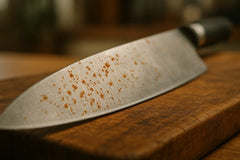
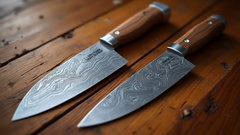
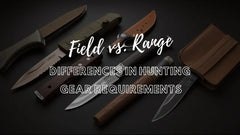
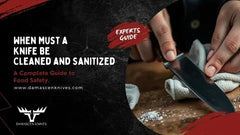
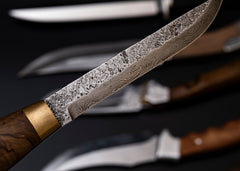
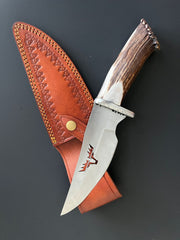
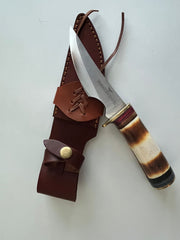
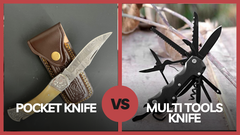
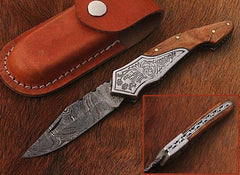

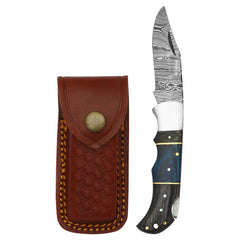
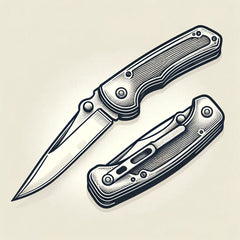
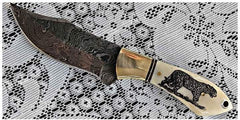
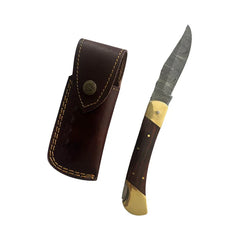



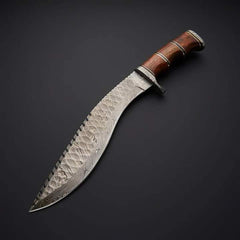
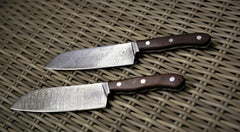
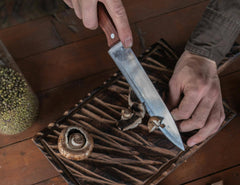

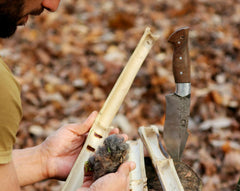


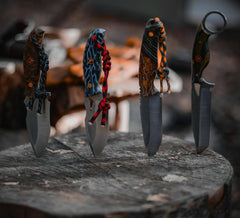

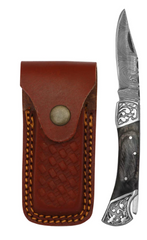
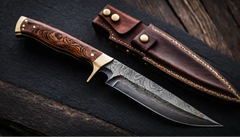
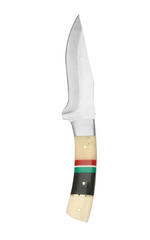
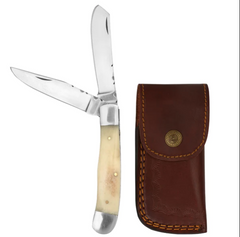
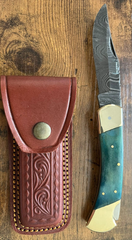
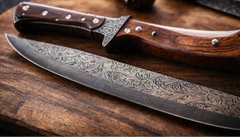

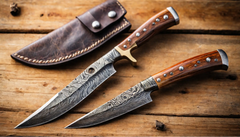
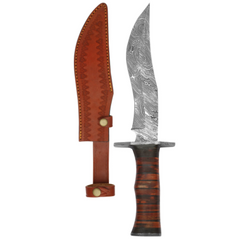
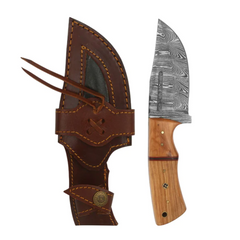
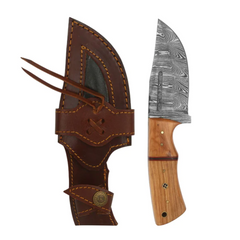
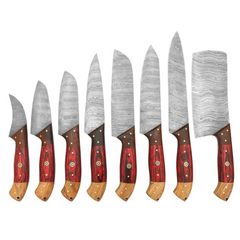
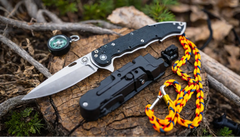


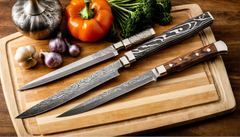
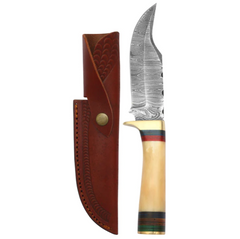
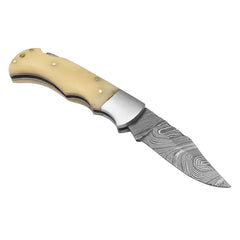
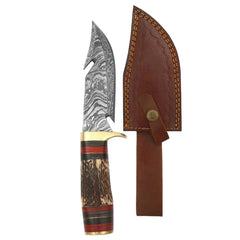

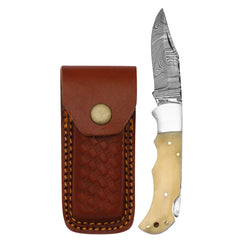

Comments